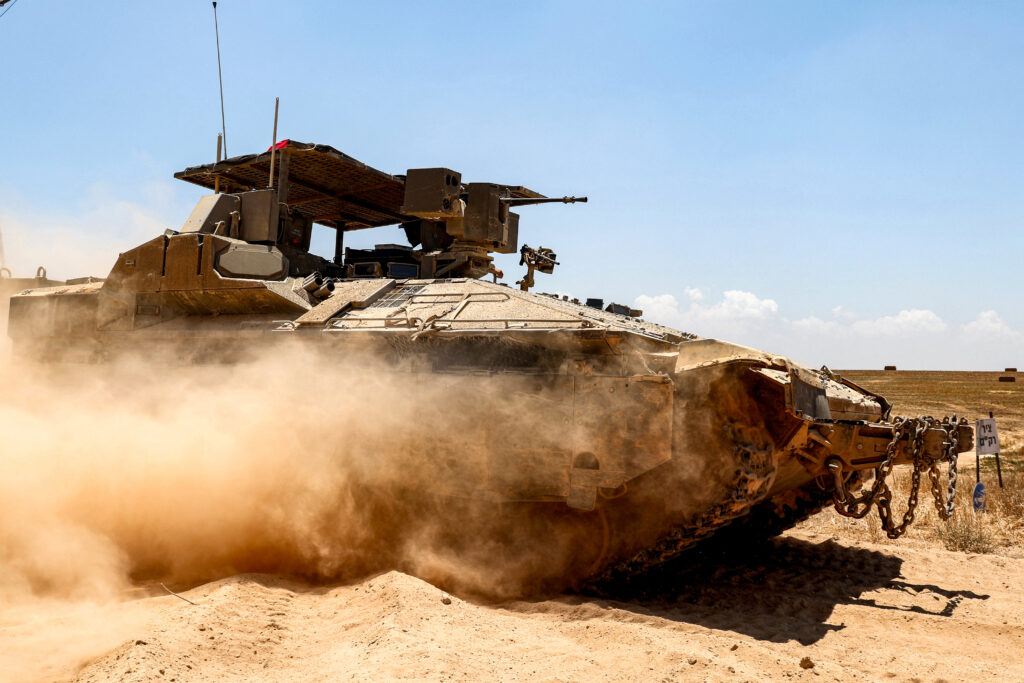Iran’s Reaction to Soleimani’s Death Shows Its Ability to Wage Asymmetric War Blunted
- - January 10, 2020
By Hussain Abdul-Hussain
Seventeen years after its blunder in the 2003 Iraq War, America has regained its mojo. It was previously thought inconceivable that Washington would dare assassinate the Iranian Quds Force general, Qassem Soleimani. Not only did it do so, but, judging from Tehran’s response, America also managed to neuter Iran’s ability to conduct non-state level warfare. If indications pan out, the repercussions will be immense for Iran’s proxy wars throughout the region.
To appreciate this, you have to understand the totality of what Iran did and didn’t do.
Iran lost Soleimani, the mastermind of its signature “asymmetric war,” and had to retaliate. But it was in a bind. If it attacked Americans without claiming responsibility, that would not have counted as revenge. But if Tehran killed Americans openly, it risked more US wrath and a large-scale war that could devastate the country, where the economy already has been crippled by American sanctions.
Tehran chose to respond openly. But its response was restrained and staged – almost theatrical. Foreign Minister Javad Zarif was tasked with messaging the attack in real time. He also made sure it coincided with primetime TV viewing in the US. Zarif, after all, is practically American. He studied and lived many years in the US and later worked as his country’s permanent delegate to the UN.
Shortly after the missile attacks on US bases in Iraq, it became clear that the Iranian “revenge” was more of a public relations stunt. Zarif tweeted the official Iranian position, signaling that the missiles “concluded” Iran’s “proportionate” response.
Trump could have used the attack as a pretext to send B-52 bombers over Iran. But he, too, called it a night. A feeling of relief and victory over Iran’s mullahs prevailed. It was clear that Iran correctly understood Trump’s red lines: American blood shall not be spilled. Barack Obama was right – not, however, for signing a faulty nuclear treaty with Iran, but for realizing that the regime responded correctly to external stimulus. When Obama showed weakness, Iran expanded. When Trump flexed America’s muscles, Iran licked its wounds.
Iran’s defeat to Trump is its own doing. After attacking regional oil tankers and Saudi oil installations and downing a US drone with no US reprisal, Iran “concluded that Trump was all talk and bluster,” according to Karim Sadjadpour, a senior fellow at the Carnegie Endowment.
In fact, Iran had become so complacent that, on the day before Soleimani’s death, Iranian Supreme Leader Ali Khamenei belittled Trump’s various threats. “[Trump] has tweeted that he sees Iran responsible for the events in Baghdad and will respond,” he said in a tweet, alluding to the months of deadly protests in the Iraqi capital. He then added: “You can’t do anything.” A day later, a US drone killed Soleimani.
Given his long career, Khamenei probably realized instantly that Trump had changed the rules of the game, and hence started choreographing Iran’s response. The Iraqi parliament met but did not obtain a quorum, according to Bilal Wahab from the Washington Institute for Near East Policies. Unperturbed by mere technicality, lawmakers nevertheless voted on a non-binding resolution that recommended US troops withdraw from Iraq – which Iranian propaganda and some US and other media outlets depicted as a mandatory demand from the Iraqi cabinet.
Next, Iranian propaganda and, again, some American and international media, tried to portray Soleimani as a popular figure in Iraq, even though Iraqis have long been protesting against Iran and its militias. Iranian propaganda, along with a US daily, claimed that more than a million mourners participated in Soleimani’s. Experts who studied aerial photographs of the crowds suggested that there were 90,000 at best.
Finally came the missiles that fell nowhere, with an official Iranian message saying Tehran had concluded its retaliation. Iranian propaganda then insisted that the attack killed 80 American troops and wounded 200, and that America was hiding the news – an impossibility in a country where even transcripts of presidential calls to foreign leaders are made public.
Trump killed Soleimani and Iran could not retaliate, not even by using its proxies. Over the past decade, America has accumulated enough experience to learn how to deal with non-state actors while keeping American losses to a minimum. Defeating ISIS and killing its leader, Al Baghdadi, was one example.
Now, taking out Iran’s king of asymmetric warfare is another. Next will be to see how this affects all the wars Iran fights with its neighbors. Early indications from its almost impotent reaction to Soleimani’s death is that its abilities have now been greatly reduced. SYNDICATION BUREAU
About the Author
Hussain Abdul-Hussain is the Washington bureau chief of Kuwaiti daily Al-Rai and a former visiting fellow at Chatham House in London.
Image caption: Iran’s missile programme. Photo: Fars News Agency, shared on Wikipedia Commons.
More in This Series
More in This Series
- Jean-Loup Samaan
- - July 11, 2024
- Aisha Al-Sarihi, Ehsan Rasoulinezhad, Jinseok Sung
- - June 20, 2024








